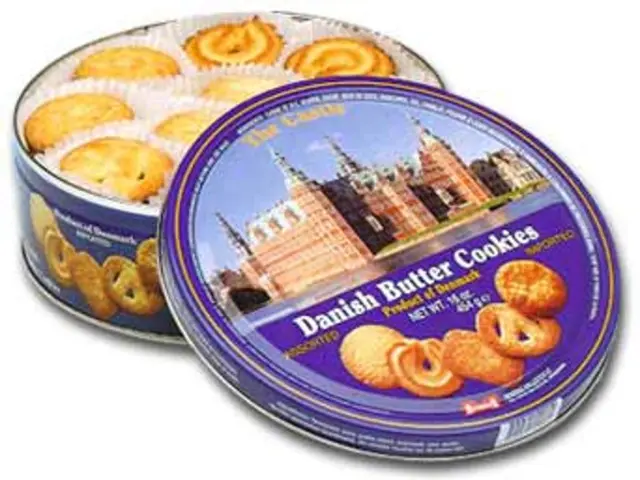Categories and Descriptions of Medicinal Substances
Exploring the Varied Types of Homoeopathic Materia Medica: A Guide for Practitioners and Students
In the world of homoeopathy, the Materia Medica—a systematic record of medicinal substances—plays a significant role. In this piece, we delve into the categorization and types of Homoeopathic Materia Medica, authored by numerous homeopathic professionals across the globe.
Following the breakthrough experiments on Peruvian bark, Dr. Hahnemann continued his proving work on an array of medicinal substances, which he meticulously documented in volumes. Known as Materia Medica Pura, these works pale in comparison to the wealth of information available today.
The Materia Medica serves as a comprehensive book housing details about various medicines. In a homoeopathic perspective, the Homoeopathic Materia Medica comprises systematically recorded homoeopathic remedies, proven on healthy human beings of both sexes and varying ages.
To grasp the essence of these remedies, a meticulous study is imperative, encompassing clinical experiments, pharmacology, and other relevant factors. With the continuous growth in homoeopathic discoveries, the inventory of remedies has expanded significantly, accompanied by an increasing number of clinically-related symptoms documented by homeopathic practitioners worldwide.
Approximately 400 books of Materia Medica in English and various other languages have been penned. Each Materia Medica carries its unique set of advantages and disadvantages, making it challenging to classify them. However, they can be organized into distinct categories according to their content.
The Materia Medica can be split into two major categories:
- Fundamental or Unmodified Type of Materia Medica
- Medicines featured in their original language, without any alterations by the author. Examples: Materia Medica Pura by Dr. Samuel Hahnemann.
- Applied or Modified Type of Materia Medica
- Following the collection of symptoms from the prover, the medicines are written in the author's language with modification. This type can be classified further:
a) Materia Medica of Drug Proving- Contains medicines along with their proving records on healthy human beings. Examples: A Cyclopaedia of Drug Pathogenesy by Dr Richard Hughes, Condensed Materia Medica by Dr Constantine Hering, and Materia Medica Pura by Dr. Samuel Hahnemann.
b) Clinical Type of Materia Medica- In this type, clinical symptoms of medicines are organized systematically after they've undergone proving. Advantages include quick medicine selection for practical use in clinics; however, a complete drug picture cannot be studied. Examples: A Clinical Materia Medica by Dr. E. A. Farrington, A Dictionary of Practical Materia Medica by Dr J. H. Clarke, and Handbook of Materia Medica by Dr. T. F. Allen.
c) Therapeutic Type of Materia Medica- This approach groups medicines based on different diseases, allowing for easy medicine selection in specific scenarios. However, understanding the whole drug picture remains elusive. Examples: Homoeopathic Therapeutics by Dr Lilienthal, Leaders in Typhoid Fever by Dr E. B. Nash, Practical Homoeopathic Therapeutics by Dr Dewey, The Prescriber by Dr J. H. Clarke.
d) Comparative Type of Materia Medica- This method compares medicines with similar pathogenesis, highlighting their distinguishing points. Advantageous for cases with seemingly similar symptoms and aiding in selecting the most suitable remedy. Examples: Comparative Materia Medica by Dr E. A. Farrington, Comparative Materia Medica by Dr N.C. Ghosh, Leaders in Homoeopathic Therapeutics by Dr E. B. Nash.
The remaining classifications include Group Study Type, Pharmacodynamic Type, Physiological Type, Schematic, Picture Type, Picture Method, Poetry Type, Psychoanalysis Type, Keynotes Type, Combined Type, and more, each offering unique insights into various aspects of homoeopathic remedies.
In conclusion, the Materia Medica books have evolved, with each author contributing to a better understanding of homoeopathic remedies. While each categorization carries its distinct scope and limitations, comprehending the groups with characteristic mental and physical symptoms serves as a useful foundation for many practitioners and students alike.
In the realm of homoeopathy, a meticulous study of homoeopathic remedies, systematically recorded in the Homoeopathic Materia Medica, is essential for understanding the essence of these remedies. To facilitate a comprehensive understanding of various Materia Medica books, they can be divided into distinct categories based on their content, such as the Fundamental or Unmodified Type, Applied or Modified Type, Therapeutic Type, Comparative Type, and more. This categorization provides diverse perspectives on homoeopathic remedies, also encompassing aspects like mental health in the Psychoanalysis Type.








